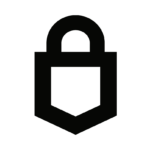10102 Home > Invest > Solana
Solana
A third-generation blockchain that aims to provide a fast, secure and scalable infrastructure for decentralized applications, known for its high performance and low costs.

Overview
Solana is an open-source blockchain built in 2017, designed to scale blockchain technology for mass adoption. It’s a high-performance globally decentralized computing infrastructure that executes programs called smart contracts. It uses a blockchain to synchronize and store the system’s state changes and can function as a general-purpose computer. Solana facilitates a range of use cases, including finance, NFTs, payments, and gaming. Solana operates as a single global state machine and is open, interoperable and decentralized.
Just like Ethereum, Solana not only tracks who owns which digital currency, but also stores and runs programs. These programs can handle any kind of data, much like how a computer stores various types of information and saves changes as the user operates different functions. Solana blockchain records changes to this data, ensuring everyone agrees on the current state of all programs and data.
Unlike Ethereum, which follows blockchain modular architecture that scales through multiple blockchain layers, the Solana blockchain is monolithic, providing a scalable blockchain network using only one layer.
Main concepts
Similar to Ethereum, Solana facilitates smart contracts (or “program” in Solana’s world) and dApps, supporting a wide range of use cases from decentralized finance platforms to non-fungible token marketplaces.
Programs
Similar to Ethereum’s smart contracts, Solana’s programs are on-chain accounts that store executable logic, organized into specific functions referred to as instructions to enforce the rules when certain conditions are met. The code ensures that everyone sticks to the agreement, and if the conditions aren’t met, the contract doesn’t go through.
Once deployed, the code of a program cannot change. Unlike with traditional software, the only way to modify a program is to deploy a new instance. The outcome of the execution of a profram is the same for everyone who runs it, given the context of the transaction that initiated its execution and the state of the Solana blockchain at the moment of execution. Since the rules are written in code on the blockchain, everyone involved can see exactly what the contract says, and no one can change it without everyone knowing.
Solana works differently from most blockchains, including Ethereum, by keeping the code and the data it works with separate. In Solana, the data that programs use is stored in separate accounts. When a program runs, it gets the data it needs by referencing these accounts, rather than having the data built into the program itself. By storing data separately from the programs that use it, Solana allows multiple programs to access and manipulate the same data simultaneously. Programs don’t need to be redeployed with new data and instead can reference existing data accounts.
Decentralized Apps (DApps)
A DApp, or decentralized application, operates primarily or entirely on a decentralized network. Its business logic is governed by smart contracts, making its backend fully distributed and managed on a blockchain platform. To simplify, we can think of a smart contract as replacing the server-side (or “backend”) component in a regular application. Unlike traditional applications hosted on centralized servers, DApps have no downtime and remain available as long as the underlying blockchain is operational.
The on-chain nature of a DApp allows anyone to inspect its code, ensuring transparency and trust in its functionality. All interactions with the DApp are permanently recorded on the blockchain. As long as users have access to an Ethereum node (which they can run themselves if necessary), they can interact with a DApp without any interference from centralized entities. Once deployed, the smart contract code is immutable, meaning neither service providers nor the contract owner can alter it.
Solana is ideal for high-frequency trading platforms, gaming, and other performance-sensitive applications that benefit from its high throughput and low latency. It’s quickly becoming known for DeFi and NFT projects looking for faster transactions and lower fees.
Solana Virtual Machine (SVM)
Virtual machines (VMs) are software systems that mimic a computer, allowing you to run an operating system and applications. The Solana Virtual Machine (SVM) is the part of the Solana blockchain that manages smart contract transactions. These transactions involve changes to the blockchain’s state, which the SVM processes and updates. SVM is optimized for Solana’s unique architecture, allowing it to handle a high number of transactions with minimal delay.
Unlike Ethereum and most other blockchains, which process transactions sequentially, Solana is designed to handle multiple transactions simultaneously, a method known as “parallel processing.” This allows Solana to process transactions faster. Solana also employs a unique fee system to keep costs low. In contrast to other blockchains where a spike in activity on one smart contract can raise fees for everyone, Solana’s localized fee market ensures that only the busy contract experiences higher fees. The rest of the network remains unaffected, keeping transaction costs stable even during high-demand periods.
Fees
Fees on Solana compensate validators for the resources they use to process transactions, help reduce spam by making it costly to flood the network with transactions, and contribute to the long-term economic stability of the Solana network. Half of the transaction fee is burned (destroyed) to help maintain the value of SOL, while the other half goes to the validator that processed the block. Unlike Ethereum, Solana offers minimal transaction costs, with fees often being just a fraction of a cent. This low fee structure is attracting many projects and users, especially those frustrated by Ethereum’s high costs.
Proof-of-Stake and Proof-of-History
Solana employs a unique Proof-of-History (PoH) combined with Proof-of-stake (PoS) mechanism. PoH, which acts like a digital clock for the network, creates a record of every event or transaction that happens, assigning each one a specific timestamp. This process helps Solana keep track of what happens and when, allowing validators to choose the most trustworthy chain without needing to verify every block in full. In contrast, Ethereum validators have to do more calculation to determine the right fork, lacking the clear timestamp that PoH provides. PoH works together with PoS to help the network reach agreements, stay secure, and validate transactions efficiently, allowing Solana to be one of the fastest blockchains in existence.
In its PoS, Solana’s SOL tokens are then staked, or locked up, as collateral to show that the participants, known as validators, have a vested interest in keeping the network secure and running smoothly. Validators earn rewards based on how much SOL they have staked, so it benefits them to attract more stake from others. To do this, they need to perform well, provide good returns, maintain strong relationships with those who stake with them, and be transparent and honest. This means that the way validators earn money is closely tied to what’s best for the network, as determined by the choices of the people who delegate their stake to them. Validators with malicious actions will get some of their stake destroyed, a process known as “slashing” to disincentivize validators from dishonest behaviors. Additionally, Solana’s PoS mechanism selects a single “leader node” responsible for organizing and sequencing the transactions between various nodes. This approach streamlines the process, reducing the overall burden on the network and enabling faster transactions.
How are transactions processed?
On Solana, a transaction is a set of instructions telling the network to perform a specific action, such as transferring funds or updating data. When a transaction is initiated on Solana, it goes to the current slot’s leader node. The leader checks if the transaction is valid, processes it if it is, and adds it to the block for that slot. Other validators then review and confirm this block to make sure everything is correct.
Tokenomics
Solana distributed SOL tokens through five funding rounds, with four of these being private sales. In other words, private investors and VCs own a large portion of the token’s supply. The tokens allocated to the team, early investors, and foundation are subject to vesting schedules to prevent sudden influxes of tokens into the market, which could cause price volatility.
At launch, Solana had a total supply of 489 million SOL tokens. There is no fixed maximum supply for SOL; instead, Solana uses a unique inflation model to reward validators and encourage staking. The initial inflation rate is 8%, but it will decrease by 15% each year until 2031, eventually stabilizing at 1.5%. New SOL are issued as a reward to validators according to this inflation rate.
Additionally, Solana burns 50% of its transaction fees paid in SOL, which helps reduce the total supply and increase the token’s scarcity.
Similar to Ethereum, staking is an important aspect of Solana’s tokenomics. Validators must lock up their SOL, which reduces the amount of SOL in circulation. This decrease in supply can put upward pressure on the token’s price if demand remains constant or increases. The minimum amount required to stake is 0.01 SOL, and staking turns SOL into a yield-bearing asset.
Governance
Solana’s governance model impacts its tokenomics by influencing validator incentives, token delegation, voting power, protocol changes, and economic alignments.
Governance on Solana is currently limited and infrequently utilized. Most changes to the protocol require off-chain social consensus, with ultimate authority resting with the core engineers at Solana Labs. The governance process involves proposing Solana Improvement Documents (SIMDs), which are then voted on by validators. If a proposal is approved, client developers implement the changes. Validators operate similarly to elected representatives in a proportional representation system. Solana stakers delegate their stake to validators, who then cast votes based on the amount of stake they hold.
Ecosystem overview
Wallets
A crypto wallet is a digital tool that allows you to securely store, manage, and transact with your cryptocurrency holdings.
– Hot wallets are connected to the internet, making them convenient for frequent transactions and quick access to your funds. However, their online status makes them more susceptible to cyber threats. Wallets like Phantom, Exodus, and Solflare are popular choices among Solana users due to their user-friendliness, availability for dApps, and staking options.
– Cold wallets, or hardware wallets, are not connected to the internet, which makes them a much safer option for long-term storage of assets. They are typically used to store large amounts of cryptocurrency securely. Cold wallet integrations for the SOL wallets are available from Trezor, Ledger and SafePal.
– A multisig, or multi-signature wallet, is a type of digital wallet that requires multiple private keys to authorize a transaction, providing an added layer of security for managing cryptocurrency assets. Multisig wallets that support Solana include Squads and Cashmere.
Block explorers and analytics
Understanding what’s happening on the Solana blockchain can be made easier with the help of block explorers and analytics tools. Block explorers are web-based tools that allow users to view and search the transaction history, blocks, and other data on the TON blockchain. They are essential for tracking transactions, verifying addresses, and exploring blockchain activity. Here’s an overview of the leading Solana block explorers:
– Solscan (solscan.io) is one of the most widely used block explorers for Solana. It offers a user-friendly interface with detailed information on real-time transaction tracking, comprehensive token and contract analysis, detailed account history and balances with advanced search options and filtering
– Solana Beach (solanabeach.io) provides a visually appealing and intuitive interface for exploring the Solana blockchain. It focuses on user experience and offers interactive blockchain explorer with live data, detailed information on transactions and blocks, insights into network performance and validator statistics, and adashboard for monitoring Solana’s network health and performance
– Solana FM (solana.fm) is known for its clean design and detailed analytics. It provides transaction details and history, token information and market data, tools for exploring account activity and balances, all in an easy-to-navigate interface for both beginners and experienced users.
– Solana Explorer (explorer.solana.com) is the official block explorer provided by Solana. It offers basic and advanced search functionalities, real-time data on transactions and blocks, information on validator performance and network statistics and access to on-chain data and smart contract interactions.
Development tools
Here are some popular tools and resources Solana developers use to build and manage applications on the blockchain:
– Anchor: a framework for building and deploying Solana programs. It simplifies development with a set of tools and libraries, offering a streamlined approach to writing secure and efficient smart contracts using Rust.
– Solana CLI: a command line interface tool for interacting with the Solana blockchain. It allows developers to deploy programs, manage accounts, and perform various blockchain operations directly from the terminal.
– Solana Playground: an online environment where developers can write, test, and deploy Solana programs. It offers a simplified and accessible way to experiment with code and interact with the blockchain directly from the browser.
– Solana Web3.js: a JavaScript library that allows developers to interact with the Solana blockchain from web applications. It provides a range of functions for building dApps, handling transactions, and managing accounts on Solana.
– Metaplex: a toolkit for creating and managing NFTs on Solana. It provides an easy way to launch NFT projects and mint new tokens, with built-in support for various NFT standards and features.
Infrastructure projects
In this section, we’ll explore key areas of Solana’s infrastructure, including oracles and cross-chain technologies. Each of these components plays a crucial role in expanding use cases for the Solana network.
Oracles
Oracles are tools that bring real-world data into the blockchain so programs can use it. This is important because on-chain programs can’t access information outside the blockchain by themselves. By allowing programs to use off-chain data, oracles make decentralized applications more useful. For example, prediction markets on the blockchain depend on oracles to provide results, like election outcomes.
Solana has several oracle providers, but two of the most notable ones are Pyth and Switchboard. Each has its own approach and features.
– Pyth focuses mainly on financial data from top financial institutions. Their data providers share market updates, which are then collected and published on the Solana blockchain by the Pyth program. Pyth’s data is not fully decentralized because only approved providers can publish data. However, it is high-quality and reliable due to its sources being major financial institutions.
– Switchboard is a decentralized oracle network that offers a wide range of data types. Unlike Pyth, anyone can run a Switchboard oracle and access its data. This means you have to be careful when choosing which data feeds to trust. More details about Switchboard’s feeds can be found on their website.
Cross-chain infrastructure
Cross-chain infrastructure on Solana refers to the technology that allows Solana to interact and exchange information with other blockchains. Blockchains are built as independent ledgers, each with its distinct governance rules, security protocols, and data structures. While this autonomy ensures security and integrity within each network, it also creates an environment where interoperability is not natively built in. Cross-chain connectivity is crucial as it enables different blockchains to work together, creating a more integrated and versatile ecosystem. Here’s a look at some of the key cross-chain infrastructure projects in the Solana ecosystem:
– Wormhole is a major cross-chain bridge that connects Solana with other blockchains like Ethereum and Binance Smart Chain. It allows users to transfer assets and data between these networks securely and efficiently. Wormhole supports the creation of wrapped tokens, which are versions of assets from one blockchain that can be used on another. For example, you can move Ethereum-based assets to Solana and vice versa using Wormhole.
– Allbridge is another important cross-chain bridge that facilitates the transfer of assets between Solana and various other blockchains, including Ethereum, Binance Smart Chain, and Avalanche. It aims to simplify the process of moving assets across different networks and enhance liquidity within the Solana ecosystem.
– The Solana Bridge is an official tool developed by the Solana team to connect Solana with Ethereum. It allows users to move assets like SOL and SPL tokens (Solana Program Library – the standard tokens on the Solana blockchain) between the two networks. This bridge supports both asset transfers and decentralized application interactions across Solana and Ethereum.
– LayerZero is an omnichain interoperability protocol that connects Solana with other blockchains through a decentralized and trustless bridge. It focuses on enabling seamless cross-chain communication and data transfer, making it easier for developers to build applications that work across multiple networks.
Notable innovations
Solana is a versatile blockchain with a growing ecosystem that supports a wide range of use cases. Here are some of the most notable areas where Solana is making an impact:
DeFi
Decentralized, or DeFi, is one of the most impactful innovations on Solana, enabling financial services like lending, borrowing, trading, and earning interest on-chai without relying on traditional banks and intermediaries. Key DeFi projects and protocols on Solana include:
– Jupiter is a leading DEX (Decentralized Exchange) aggregator on Solana, known for helping users find the best prices by routing trades through multiple DEXs.
– Raydium and Orca are the top decentralized exchanges on Solana, offering users efficient trading and liquidity options.
– Kamino, Marginfi, and Solend are the top lending protocols in the Solana ecosystem, providing a range of borrowing and lending services.
– OpenBook is a popular order book platform on Solana, allowing users to trade large volumes without incurring fees.
– Jito and Marinade Finance are prominent liquid staking services on Solana, enabling users to stake their tokens while maintaining liquidity.
NFTs
NFTs, or Non-Fungible Tokens, enable the digital ownership of both digital and physical items, including art, music, collectibles, and in-game assets. Before NFTs, proving ownership of digital items was challenging because digital files can be easily copied, making it difficult to distinguish originals from copies. NFTs address this issue by using blockchain technology to create a unique digital certificate of ownership. The blockchain records who owns each NFT and tracks its history, making it impossible to forge or counterfeit. This ensures that ownership is secure and verified. In the future, NFTs could also serve as certificates of ownership for real-world assets, as well as digital identification and personal credentials or achievements.
Solana is an ideal infrastructure for NFTs because of its high-speed, low-cost transactions and scalable network. With Solana, creators and collectors can mint, buy, and sell NFTs without worrying about high gas fees or slow transaction times. Here are some of the key NFT protocols on Solana:
– Metaplex is the most prominent NFT protocol on Solana. It provides the infrastructure for creating, minting, and managing NFTs, making it easier for creators to launch their collections. Metaplex includes tools like Candy Machine, which automates the minting process, and Auction House, which enables decentralized auctions for NFTs. Many of the top NFT projects on Solana are built on Metaplex.
– SolSea is a popular NFT marketplace and protocol on Solana, allowing users to create, buy, and sell NFTs. It distinguishes itself by offering creators the ability to embed licenses directly into their NFTs, ensuring that intellectual property rights are clear and transparent.
– Magic Eden is one of the leading NFT marketplaces on Solana. It offers a user-friendly platform for trading NFTs, with features like low transaction fees and fast settlement times. Magic Eden has become a hub for NFT projects and collectors on Solana.
– DigitalEyes is another well-known NFT marketplace on Solana, focusing on providing a platform for both established and emerging NFT projects. It supports a wide variety of NFTs, including art, gaming assets, and collectibles.
– Holaplex is an open-source, decentralized NFT marketplace protocol that allows creators to build and customize their own NFT storefronts. It empowers artists and creators to have full control over their NFT sales and branding.




